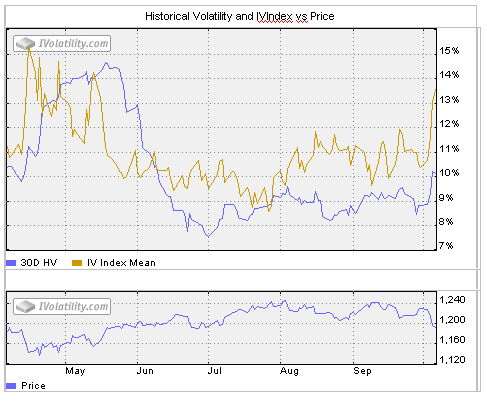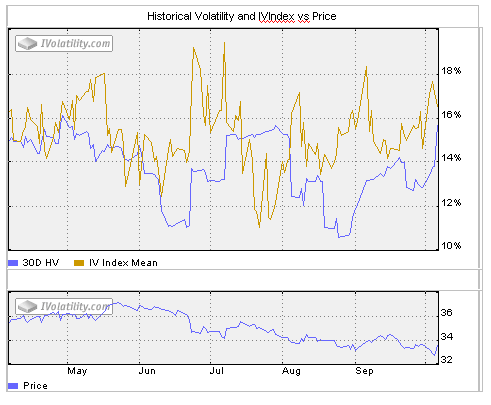Public options traders are overly optimistic, here’s why
Editor’s note: Advanced options traders will enjoy this article
by professional options trader Adam Warner. For over a decade, Adam was an
options market maker on the floor of the AMEX. He currently is a proprietary
trader specializing in options and derivative strategies.
With the recent strength in volatility readings this past week, a question begs
to be asked: Was option volatility really so
cheap to begin with? Strange question coming off a time frame that saw
decade-low readings in the VIX/VXO/VXN troika, but here’s the rub. Option
volatility (the implied volatility) has actually traded consistently higher than
the fluctuations of the stocks themselves would justify. Take this chart of SPX
volatility (courtesy of ivolatility.com) for example.

Except for a couple of blips here and there, SPX
options have traded higher in volatility terms than the SPX itself since
mid-April. The same is true for most individual stocks as well. Here’s how it
looks in GOOG.
and GE.

In fact, the same pattern holds in virtually every non-energy name. Here’s what
the VLO chart looks like, and its pretty representative of the sector.

My bottom line would be that on the surface the VIX/VXO/VXN still trade at very
low absolute levels, as does the volatility of most stocks. At least its very
low compared to what we are used to from the last decade. But at the same time,
options consistently maintain an over optimistic bias relative to how the
underlying stocks themselves behave.
So in order to properly analyze volatility these days, we should really just
look at it relative to the world around it. The VIX/VXO/VXN are clearly
overbought in the short term as they hit levels roughly 20% above their 10 Day
SMA’s. But longer term they’re over owned as well, at least relative to
underlying stock action.
Adam Warner
